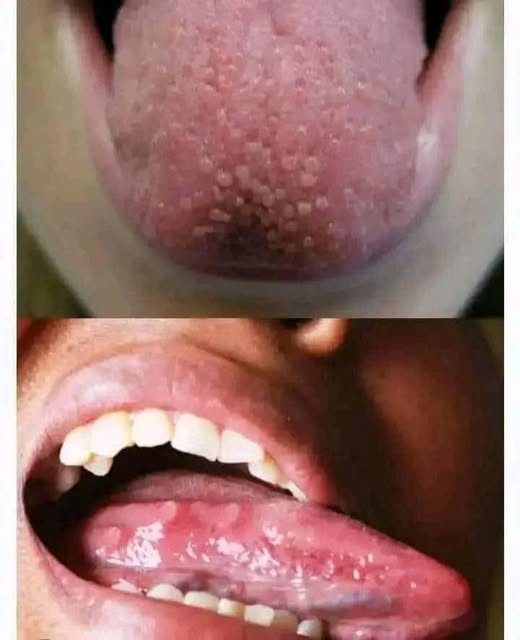If you’ve ever noticed small bumps or pimples on your tongue, you’re not alone. These bumps are fairly common and usually not serious, but they can be uncomfortable and sometimes signal an underlying issue. Understanding the potential causes and how to manage them is essential for maintaining good oral and overall health.
What Are Tongue Bumps?
Tongue bumps, often referred to as transient lingual papillitis or enlarged papillae, are small elevations on the surface or edges of the tongue. They may appear red, white, or the same color as the tongue and can cause sensations such as soreness, irritation, or sensitivity.
Most cases are temporary and resolve on their own. However, persistent or painful bumps should be evaluated by a healthcare provider to rule out more serious conditions.
Tongue Bumps: Lie Bumps, Canker Sores, and More
Common Causes of Bumps on the Tongue
According to the Mayo Clinic and Cleveland Clinic, the following factors are among the most frequent causes of tongue bumps:
1. Minor Injuries
Accidentally biting the tongue
Burns from hot foods or beverages
Irritation from rough or sharp foods (e.g., chips, hard candy)
These minor traumas can cause localized swelling or inflammation of taste buds (papillae).
2. Food Sensitivities or Allergies
Some individuals may experience oral irritation after consuming certain foods, especially those that are:
Spicy
Acidic (e.g., citrus fruits)
Containing preservatives or additives
If bumps regularly occur after specific meals, it may indicate a food sensitivity or mild allergic reaction.
3. Nutritional Deficiencies
Deficiencies in certain vitamins and minerals, especially:
Vitamin B12
Iron
Zinc
can cause tongue inflammation, soreness, and sometimes visible bumps. A balanced diet is crucial to maintaining oral tissue health.
Transient Lingual Papillitis (Lie Bumps): Causes & Treatment
4. Oral Infections
Several infections may lead to bumps on the tongue:
Oral Candidiasis (Thrush): A yeast infection that appears as white patches or bumps.
Oral Herpes (HSV-1): Can cause fluid-filled blisters or ulcers on the lips and tongue.
Viral or bacterial infections: Including the common cold or strep throat, may lead to tongue irritation.
5. Transient Lingual Papillitis
This is a benign condition where taste buds become temporarily inflamed, often referred to as “lie bumps.” It typically resolves within a few days without treatment.
6. Systemic Health Conditions
Certain medical conditions can increase susceptibility to tongue problems:
Diabetes: Can lead to increased oral infections.
Autoimmune disorders (e.g., Sjögren’s syndrome): May cause dry mouth and irritation.
Hormonal changes: May affect oral tissue, particularly in women.
7. Lifestyle Factors
Smoking and alcohol use can irritate the tongue’s surface and contribute to inflammation or bumps.
Stress and anxiety may weaken the immune system, increasing vulnerability to minor infections or flare-ups of conditions like herpes simplex virus.
Why Do I Keep Getting Little Bumps On My Tongue | Jeffrey V. Jones, DDS
Symptoms Often Associated with Tongue Bumps
Depending on the cause, additional symptoms may include:
Burning or stinging sensation
Pain or tenderness
Changes in tongue color or texture
Difficulty eating, drinking, or speaking
Mild swelling or sensitivity
If these symptoms persist longer than 7–10 days or worsen, a medical or dental professional should be consulted.
Evidence-Based Treatments
Treatment depends on the cause. According to the American Dental Association (ADA) and NIH, options include:
Home Care Options
Saltwater rinses: Rinsing with warm salt water (1/2 tsp of salt in 1 cup of water) can soothe inflammation and reduce bacterial buildup.
Hydration: Drinking water helps maintain saliva flow and prevent dry mouth.
Avoiding irritants: Limit spicy, acidic, or abrasive foods during flare-ups.
Topical honey (unprocessed): Has natural antibacterial properties and may soothe minor inflammation.
Red, white or yellow? What your tongue says about your health | Well actually | The Guardian
Over-the-Counter (OTC) Remedies
Antiseptic mouthwashes (e.g., chlorhexidine)
Topical numbing agents like benzocaine (for pain relief)
Oral gels for soothing irritation
Always follow label instructions and consult a healthcare provider before use, especially for children or those with underlying conditions.
Medical Treatment
If bumps are caused by an infection or deficiency:
Antifungal medications for candidiasis (oral thrush)
Antiviral therapy for herpes-related sores
Vitamin or mineral supplements for nutritional deficiencies
Antibiotics if a bacterial infection is diagnosed
Prevention Tips for Maintaining a Healthy Tongue
Keeping your tongue healthy can help prevent bumps and other oral issues. Here are prevention strategies recommended by CDC and oral health experts:
Brush your tongue gently twice daily as part of your oral hygiene routine.
